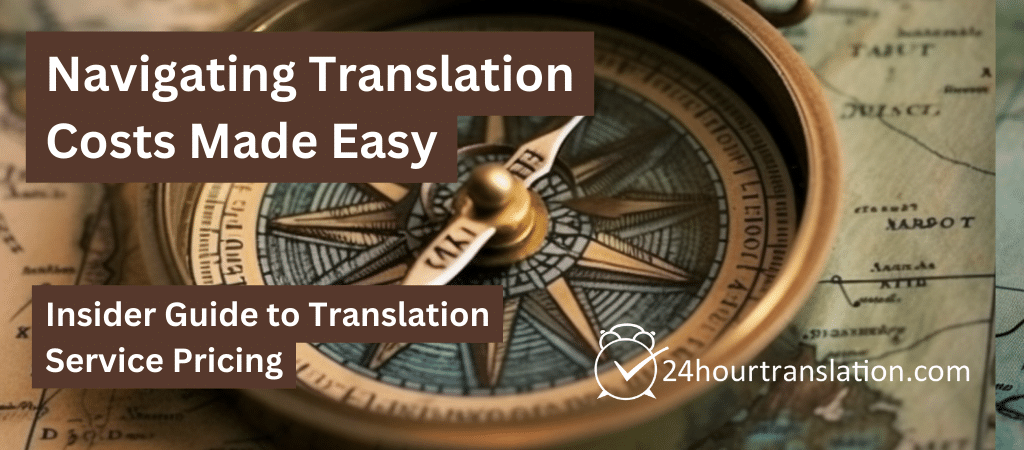
When it comes to translation services, understanding the pricing structure and cost factors is crucial for businesses and individuals alike. Whether you need English to Spanish translation, USCIS certified translation services, or professional document translation, it’s important to have clarity on the associated rates. This comprehensive guide aims to shed light on translation services pricing, offering valuable insights into the factors that influence costs and how to optimize your translation budget.
Factors Affecting Translation Services Pricing
Translation service rates can vary significantly based on various factors. To help you navigate the pricing landscape, let’s explore the key elements that influence translation costs:
- Language Combination and Pairing: The language pair you require translation for plays a significant role in pricing. More commonly spoken languages often have a lower cost compared to rarer or specialized language combinations like translation rates German to English.
- Complexity and Subject Matter: Technical, legal, or medical translations may involve specialized terminology, increasing the complexity of the project. Translating content in these fields often requires the expertise of translators with subject matter knowledge, which can impact the pricing structure.
- Word Count and Number of Pages: Translation pricing is often based on the number of words or pages in the source document. Translation services cost per word can vary depending on the language, urgency, and volume of content.
Maximize your budget with reliable translation solutions. Choose 24 Hour Translation Services for effective communication. Request a quote today!”
Request a QuoteBeware of Hidden Costs: Ensuring Transparency in Translation Services
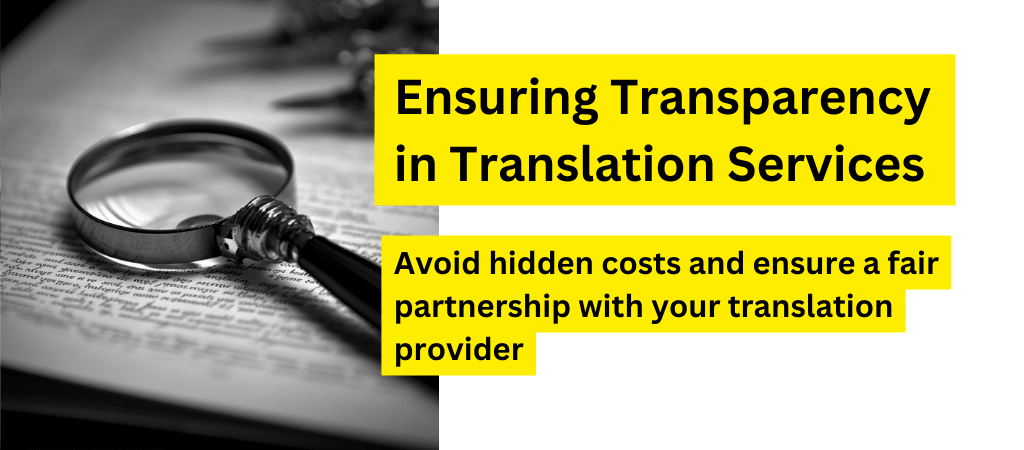
In addition to the visible pricing factors, it’s crucial to be aware of potential hidden costs associated with translation services. While many reputable translation service providers operate with transparency, there are some unscrupulous companies that may add unexpected expenses or compromise on crucial services. Here are a few key considerations to keep in mind:
- Credit Card Processing Fees: Some translation service providers may charge additional fees for credit card transactions. It’s essential to inquire about any potential surcharges or transaction costs before making payment to avoid surprises on your invoice.
- False Claims of Local Presence: Certain companies may claim to be local, but in reality, they are located outside the country. This can lead to complications in the translation process, particularly if you require physical document handling or notarization by a specific authority. For example, if you need notarization by a Texas Public Notary, a company located elsewhere may have limitations or face delays in providing this service.
- Document Delivery Time and Costs: If a translation service provider is located outside your country or region, they may need to mail the translated documents to you. This can result in additional shipping costs and longer delivery times, which may not align with your desired timeline.
To ensure transparency and avoid such hidden costs, it’s crucial to research and choose a reputable translation service provider with a proven track record. Look for companies that clearly state their location, have positive customer reviews, and provide comprehensive information about their service offerings.
Additionally, communicate your specific requirements upfront to ensure the translation company can meet them. If you need notarization or other specific services, confirm that the provider can accommodate these needs before proceeding with the translation project.
By being diligent and proactive in your selection process, you can safeguard yourself against hidden costs and ensure a smooth and transparent translation experience.
Remember, it’s always recommended to thoroughly review the terms and conditions, as well as any service agreements or contracts, before engaging a translation service provider. This will help you understand the complete scope of the services provided and any associated costs, ensuring a fair and transparent partnership.
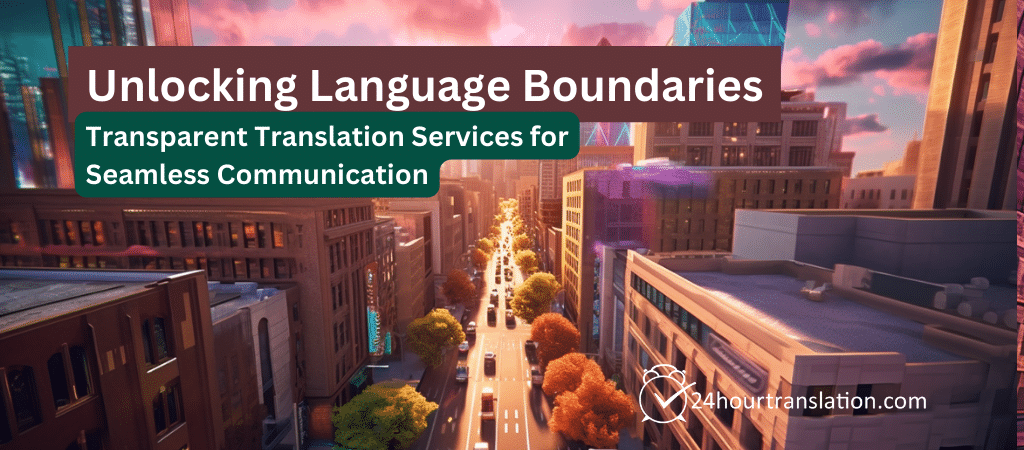
Types of Translation Services and Their Pricing
Translation services encompass a wide range of offerings tailored to specific needs. Here are some common types of translation services and their pricing considerations:
- Document Translation: Document translation involves translating various types of content such as legal documents, business contracts, educational materials, or marketing collateral. Pricing for document translation can be determined based on factors like word count, subject matter complexity, and turnaround time.
- Certified Translation: Certified translation services are often required for official documents like birth certificates, academic transcripts, or legal contracts. USCIS certified translation services are specifically recognized by the United States Citizenship and Immigration Services. The cost of certified translation may include additional fees for notarization or the issuance of a certificate of accuracy.
- Website Localization: If you’re expanding your business to new markets, website localization is essential. This service involves adapting your website content to the cultural and linguistic nuances of the target audience. Website localization pricing can vary based on the complexity of the website structure, the number of pages, and the level of customization required.
Pricing Models in the Translation Industry
Translation service providers utilize different pricing models to determine costs. Understanding these models can help you choose the most suitable approach for your translation needs. Here are a few common pricing models:
- Per Word Pricing: Translation prices per word are a widely used model. The cost per word can vary based on factors such as language pair, subject matter expertise, and project urgency. For example, English to Spanish translation rates might be different from translation rates for rarer language pairs.
- Hourly Rates: Translator hourly rates are commonly employed for projects with flexible timelines or when the scope of work is less defined. This pricing model is particularly relevant for services like project management, editing, or proofreading.
- Project-Based Pricing: Some translation projects are priced based on the entire project scope rather than per word or hourly rates. This model may be beneficial for comprehensive projects with specific deliverables.
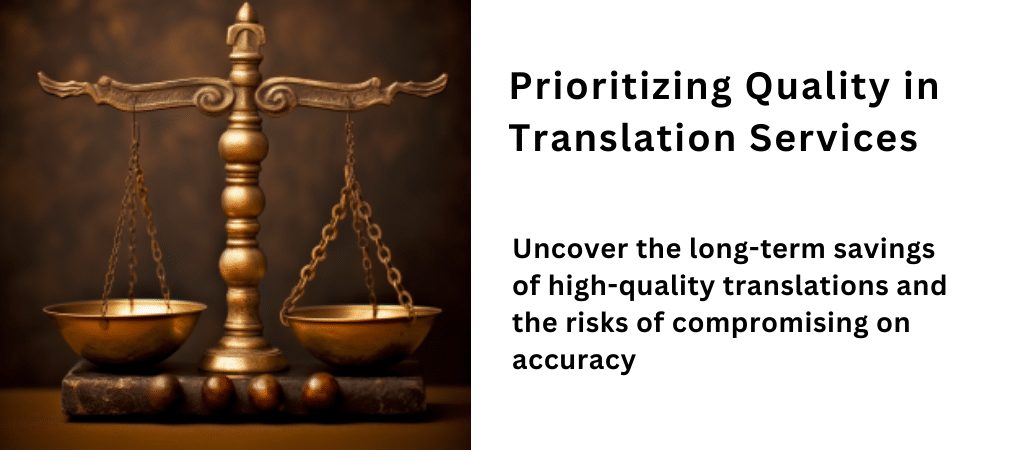
Get transparent pricing and high-quality translations. Contact 24 Hour Translation Services now!”
Request a QuoteThe Hidden Costs of Low-Quality Translations: Why Prioritizing Quality Saves You More
When it comes to translation services, cost reduction strategies are essential, but compromising on quality can have long-term consequences. While low-priced competition may seem appealing, it often comes at the expense of quality. Understanding the importance of quality and the risks associated with low-quality translations is crucial for optimizing your translation budget effectively.
- The True Cost of Low-Quality Translations: Companies that prioritize low prices over quality may deliver translations that lack accuracy, consistency, and cultural sensitivity. These translations can lead to misunderstandings, damage your brand reputation, and hinder effective communication with your target audience. Fixing errors and addressing mistranslations can be costly, both in terms of time and resources.
- Risks Beyond Pricing: Choosing a translation provider solely based on pricing can expose you to other risks. Some companies resort to using third-party review companies that provide biased or manipulated reviews, misleading customers about the actual quality of their services. Relying on such reviews can lead to poor translation outcomes and wasted investments.
- Quality Assurance for Cost-Effective Results: Prioritizing quality assurance measures ensures that your translations are accurate, culturally appropriate, and tailored to your specific requirements. Reputable translation service providers employ professional translators with subject matter expertise and implement rigorous quality checks, including proofreading and editing, to deliver accurate and high-quality translations.
- The Long-Term Savings: While high-quality translations may come with a higher upfront cost, they can save you significant expenses in the long run. Accurate translations require fewer revisions, prevent costly misunderstandings, and maintain the integrity of your content. Investing in quality ensures effective communication and can help you avoid potential legal and reputational risks associated with low-quality translations.
- Balancing Quality and Budget: Achieving cost-effective translations doesn’t mean sacrificing quality. By implementing translation cost reduction strategies that prioritize quality, such as leveraging translation memory tools, collaborating with reputable providers, and consolidating projects, you can optimize your translation budget while maintaining high standards of accuracy and consistency.
Remember, when it comes to translations, quality should always be a top priority. Don’t fall for the allure of low-priced competition that compromises quality. Instead, choose translation service providers that prioritize accuracy, cultural nuance, and subject matter expertise. Seek providers with transparent customer reviews from reliable sources and avoid those relying on manipulated third-party review companies.
In conclusion, investing in high-quality translations may require a slightly higher budget initially, but it ultimately saves you from costly revisions, brand damage, and potential legal risks. By prioritizing quality over low prices, you can ensure accurate translations, effective communication, and long-term success in your global endeavors.

Strategies to Reduce Translation Costs
While translation is an investment in effective communication, there are several strategies you can employ to optimize your translation budget and reduce costs. Consider the following tips:
- Prioritize and Plan: Start by determining the critical content that requires translation and prioritize it accordingly. By identifying the most essential materials, you can focus your resources and negotiate better rates with professional translators. Additionally, planning your translation needs in advance allows for a more organized and efficient process, avoiding rushed timelines and potential rush fees.
- Utilize Translation Memory: Translation memory tools are invaluable assets in the translation industry. These tools store previously translated segments, allowing for their reuse in future projects. By leveraging translation memory, you can benefit from cost savings, especially for recurring or similar projects. Translators can work more efficiently, resulting in reduced time and lower costs per word.
- Ensure Clear Communication: Provide professional translators with clear instructions, glossaries, and reference materials upfront. Effective communication helps avoid misunderstandings and minimizes the need for extensive revisions, which can add costs and prolong the translation process. Clear guidelines also ensure that the translated content meets your specific requirements and maintains consistency.
- Collaborate with Translation Service Providers: Building a long-term relationship with a reputable translation agency can bring numerous advantages. Establishing a partnership allows you to develop a deeper understanding of your translation needs, resulting in preferred rates, volume discounts, and consistent quality over time. By working closely with a reliable provider, you can streamline the translation process and achieve cost savings.
- Consolidate Translation Needs: If you have multiple translation projects, consider consolidating them with a single translation service provider. Bundling projects allows for better negotiation on pricing and ensures consistency in terminology and style across all your materials. This approach simplifies the management of translations, reduces administrative tasks, and may result in cost savings.
- Focus on Quality Assurance: Investing in quality assurance processes upfront can help prevent errors and minimize the need for costly revisions. Choose translation services that include comprehensive quality checks and proofreading to ensure accurate and high-quality translations from the start. By prioritizing quality, you avoid the expenses associated with rework or poor translations.
- Explore Machine Translation and Post-Editing: Machine translation, followed by human post-editing, can be an option for large volumes of content with a tight budget. While it may not be suitable for all types of content or industries, it can be an effective cost-saving solution for certain projects. Machine translation quickly generates a draft, which is then fine-tuned by professional translators during the post-editing stage, saving time and reducing costs.
By implementing these strategies, you can optimize your translation budget, achieve cost savings, and ensure accurate and high-quality translations. Remember to consider the specific requirements of your translation project, the target language, subject matter, word count, and the expertise of professional translators. By carefully managing your translation costs, you can maximize the value of your translation budget and achieve your communication goals effectively.
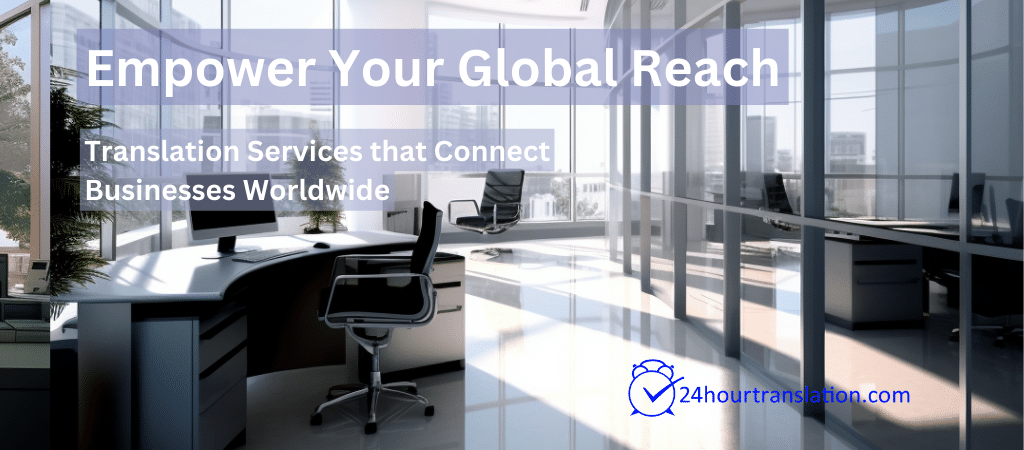
Conclusion
Translation service pricing is influenced by various factors, including language pair, complexity, word count, and service type. By understanding these factors and implementing cost-saving strategies, businesses and individuals can make informed decisions when it comes to translation services. Whether you require English to Spanish translation, certified document translation, or website localization, exploring pricing models and optimizing your translation budget can help you achieve accurate and cost-effective results.
Remember, it’s essential to choose a reputable translation service provider that offers transparent pricing, high-quality translations, and excellent customer support. By partnering with the right professionals, you can ensure your translation needs are met while maximizing your return on investment.
Frequently Asked Questions
Translation service pricing depends on various factors such as language pair, complexity of content, word count, and turnaround time.
By partnering with reputable translation service providers, you can benefit from competitive rates while ensuring accurate and reliable translations.
Translation rates vary based on language pairs, but English to Spanish translation is often competitively priced due to its demand and availability of skilled translators.
Certified translation involves translating official documents and requires additional steps like notarization or a certificate of accuracy, hence the higher cost.
Yes, reputable translation service providers offer affordable and precise translations for English to Spanish, ensuring quality without breaking your budget.
Website localization involves adapting content to target markets, including cultural and linguistic nuances, which can influence pricing based on the complexity of the website.
Factors to consider include language pair, subject matter complexity, word count, urgency, and any additional services required, like proofreading or notarization.
The comprehensive guide to translation service pricing and cost factors provides valuable insights to help you navigate and comprehend the pricing landscape.
While most reputable providers operate transparently, it’s essential to inquire about potential additional charges, such as credit card processing fees or document delivery costs.
Yes, it’s important to verify the location of the provider to ensure smooth handling of physical documents and compliance with specific local requirements.
Planning in advance, prioritizing critical content, leveraging translation memory, and consolidating projects with a reputable provider can help optimize your website localization budget.
Document translation, certified translation, and website localization are common types. Pricing is influenced by factors like word count, subject matter complexity, and level of customization.
Translation service providers employ per-word pricing, hourly rates, or project-based pricing, allowing flexibility based on project scope and specific requirements.
Strategies include clear communication with translators, utilizing translation memory tools, consolidating projects, prioritizing and planning, and investing in quality assurance processes.
The provided comprehensive guide offers valuable insights into understanding translation service pricing and optimizing your budget for accurate and affordable translations.
To ensure a fair and transparent partnership, choose a reputable translation service provider that clearly states their location, provides positive customer reviews, and offers comprehensive information about their services. Thoroughly review terms and conditions, service agreements, and contracts before engaging to understand the scope of services and associated costs, ensuring a smooth and transparent translation experience.
